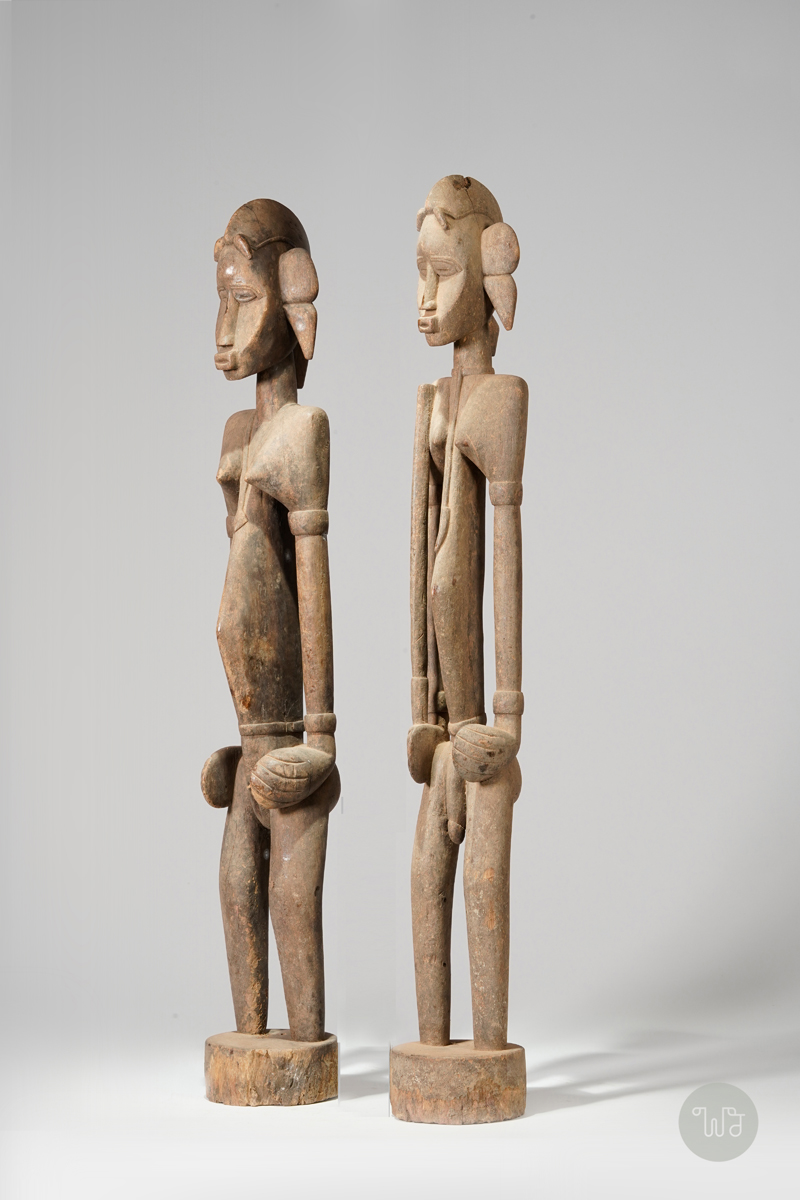|
A Senufo Rhythm Pounder or probably Guardian Sculpture couple, poropi:ibele, from the village Boundiali, from the thighs upwards standing on small cylindrical bases, the elongated arms of both bent at the wrists in an unorganic angle and resting on the thighs, a very slender body, especially the female which also has tapering small breasts, the male statue with accentuated genitalia and carrying most probably a sword, the necks are supporting impressive heads, different pendants hanging around the necks, the hairstyle consists of a crest in the middle with two little tails hanging on the forehead, a ponytail-like curl on each side and a smaller one at the nape; a light-brown patina, significant traces of age and use. Provenance Mr Diakite. „So bleibt als Résumé die Feststellung, daß die in der Literatur déblé bzw. Rhythmusstampfer und von ihren Benutzern poropi:ibele bzw. do:ogèlè genannten Statuen eine wichtige Funktion im poro der Männer haben, daß ihre Bedeutung nicht vollends bekannt ist und ihre Verwendungsweise nur im Einzelfall auf Grund von Indizien nachzuweisen ist, wenn sie nicht durch Beobachtung im Feld belegt werden konnte.“ Lit.: Burkhard Gottschalk, Senufo. Massa und die Statuen des Poro, 2002; Staatliche Museen der Preußischer Kulturbesitz, Museum für Völkerkunde Berlin, Die Kunst der Senufo, Elfenbeinküste. Mit einem Beitrag von Till Förster, 1990; Museum Rietberg Zürich, Die Kunst der Senufo aus Schweizer Sammlungen, 1988; Susan Elizabeth Gagliardi, Senufo unbound. Dynamics of art and identity in West Africa, Cleveland 2015. sold |
 photo: wolfgang-jaenicke.com, for more information, please write us an e-mail with the identification number of the photo identification no. _BBD039848.jpg |